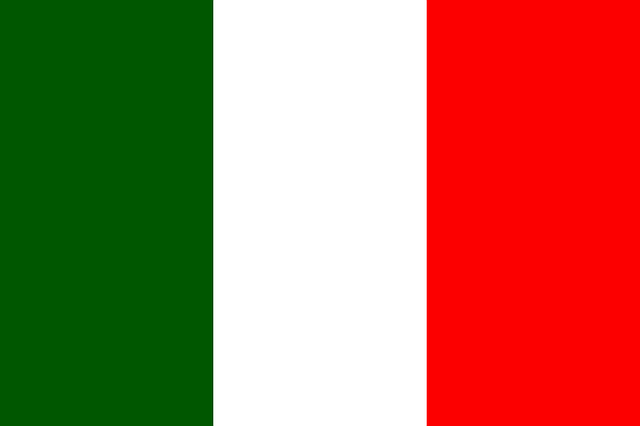Vicenza
 Context
Context
Located in the Veneto Region in the northeast of Italy, the city offers an amazing urban landscape where the renaissance architecture of Andrea Palladio represents the ideal setting for a quality and creative lifestyle. Surrounded by landscaped hills, Vicenza was founded in the 2nd century BC, and prospered under Venetian rule from the early 15th to the end of the 18th century. In the 16th century Architect Andrea Palladio, a master or renaissance architecture, restored and realized in Vicenza several palaces, villas, theatre, and other civic fabrics. Nowadays Vicenza is known in the world for being the City of Gold: here many goldsmith activities are concentrated and one of the most important trade fairs in the world of this sector takes place. The province is one with the highest level of exports in Italy, thanks to manufacturing, jewelry and clothing factories and other highly specialized sectors.
 Cultural tourism products, motivations and existing gap
Cultural tourism products, motivations and existing gap
Declared a World Heritage by UNESCO in 1994, due to the majestic architecture of Andrea Palladio, to which we owe the renaissance atmosphere of the urban and rural landscape, where we can admire buildings of incomparable elegance today. Among these, the Basilica Palladiana is a breathtaking view of the three city’s squares; the Olympic Theatre, the first and oldest permanent indoor theater of the modern era, several palaces and villas. The work of Palladio, based on a detailed study of classical architecture, gives the city its unique appearance. The palazzi were fitted into the urban texture of the medieval city, creating scenic ensembles and continuous street facades. At the gates of Vicenza we find one of its most architectural symbols, the country house Villa Almerico-Capra, also called La Rotonda, famous for the particular development of the symmetric central plan that fits harmoniously into the natural setting of the Berici Hills. Notwithstanding this unique cultural heritage, tourist flows are lower than those of the nearby cities of Padua, Verona and Venezia. But this could be a strength, not necessarily a weakness. It ensures the quality of both tourism experience and of the life in the city at the same time. For years there has been discussions on how to intercept flows from other destinations of the Region, but without great results. A change of perspective is therefore necessary: leveraging on the strengths to build and develop a new tourist imaginary that points to very specific niches: architecture lovers, passionate of theatre, dance and music, food lovers looking for slow experiences in contact with culture and nature, cultural explorer, and businesspeople who could return after a job travel, with family or friends, Business tourism is fundamental for Vicenza.
 Cultural tourism strategies
Cultural tourism strategies
The year Vicenza activated a wide participatory process to engage a huge number of stakeholders to codesign a strategy titled “Culture is a beautiful invention” to candidate Vicenza as Italian Capital of Culture. Being recognized among the 10 finalist cities, even if not the winner, Vicenza is currently investing resources to implement the program, now called “Comunque Capitale”.
Among the strategies defined to develop cultural tourism, the great exhibition that is being planned in Basilica Palladiana emerges in collaboration with the director of the Egyptian Museum. Indeed cultural exhibitions together with a cultural dynamic “Palinsesto” of cultural events, including a jazz festival, theatrical reviews of classics and dance, and several food festivals. Strategic is also the organization of a series of art, music, entertainment and culture events that animate the urban landscape during the main gold fair, an event that attracts visitors and businesses from all over the world to the city. Indeed, the relationships between Culture, Creativity and Business characterize the soul and spirit of the city, exactly such a city essence on which new tourism strategies could be based for further sustainable development.
 Lab goals
Lab goals
The Living Lab scope is to observe cultural and tourism dynamics in a real life context, involving stakeholders to share experiences, to network and to design a new tourist imaginary, addressing specific niches of cultural tourists in a sustainable way.
 Activities and innovations being developed
Activities and innovations being developed
Recognizing the importance of understanding both general tourism trends and tourist perceptions of Vicenza, the lab exploits the outcome of data analysis and interpretation. The knowledge developed in the SmartCulTour project is transferred to policy makers and stakeholders, who also cooperated to experiment with new ways to design cultural tourism products, leveraging, for example, the hidden heritage and unique places to organize tailor-made events or offer unexpected experiences such as to generate the WOW effect in tourists.
An interesting outcome of the lab has been the recognition of the potential value of developing the so-called bleasure tourism, connecting – once aging in the history of Vicenza – business with culture, creativity, and tourism. Indeed In the history of Vicenza, the Renaissance was not the result of the will of a Prince (as can be the case of Urbino, Ferrara, Mantua), but of a city that has never been a capital of a kingdom, but that has found the energy in itself to build «beautiful inventions» such as Architecture. This is why the city has been recognized as a world heritage site by UNESCO, and an advanced entrepreneurial territory, with a higher export vocation and benefit corporation in Italy. in Vicenza, companies recognize themselves as cultural and creative producers
 Stakeholders
Stakeholders
The list of stakeholders includes the Municipality of Vicenza, International Labriary LaVigna specialized in food and wine an hosted in a historic palace restored by Carlo Scarpa, Palladian Palaces and Villas Owners (such as Villa Valmarana ai Nani, Palazzo Valmarana-Braga) tourism operators (Hello Veneto, Gente Viaggi) incoming operators, (such as Itinerary Letterari and Palladian Routes) and cultural organizations (theatrical association), Events planner and travel specialist (like Manuela Maltauro) Architects, local history experts and tourist guide association (We Guide), Sport Associations, hospitality and restaurants, historic Bottegas (La Stamperia d’Arte Busato di Giancarlo Busato ) BSOs, and citizens passionate of cultural and slow tourism.



